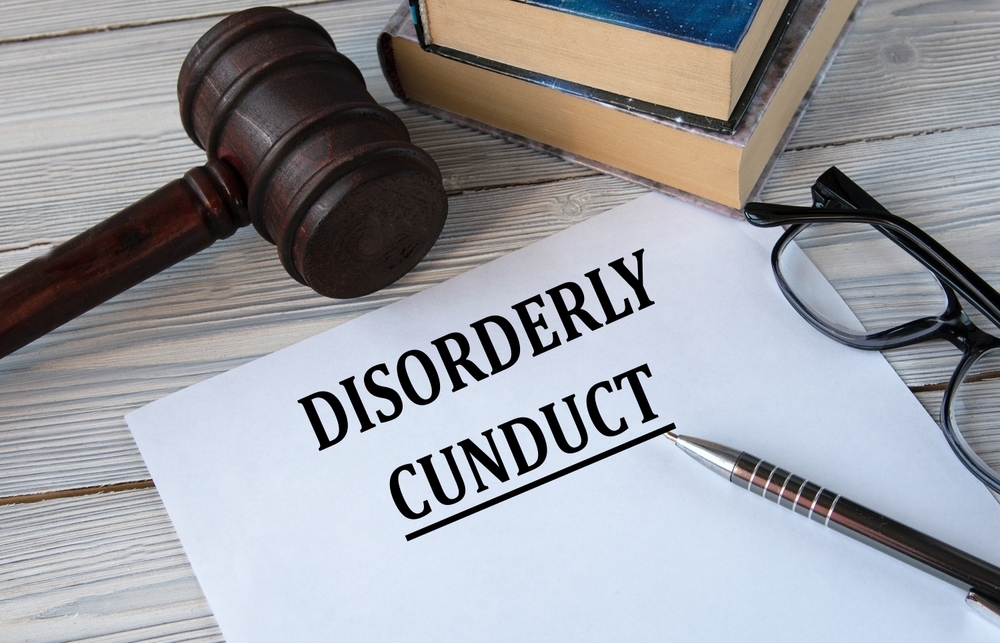
Disorderly conduct is a common charge in Ocean City, Maryland, especially during the busy summer months when tourists and locals fill the streets, beaches, and boardwalks. Prosecutors can get a conviction in a disorderly conduct case in Maryland, including Ocean City, if they prove several elements beyond a reasonable doubt. In this blog, we explain what the prosecutor must establish to convict you of disorderly conduct.
1. The Defendant Engaged in Disorderly Conduct
The first element the prosecutor must prove is that you actually engaged in disorderly conduct. Disorderly conduct includes a wide range of activities. This charge is often used as a "catch-all" for various types of disruptive behaviors that disturb the peace, endanger public safety, or disrupt public order. The prosecutor must provide evidence that your behavior falls within this scope.
Common examples of disorderly conduct include:
- Public Intoxication: Being visibly intoxicated in a public place and behaving in a manner that causes a disturbance.
- Public Fighting or Physical Altercations: Engaging in fights or scuffles in public spaces. This can include bar fights.
- Using Offensive or Abusive Language: Shouting profanities or using offensive language that incites violence or public disorder.
- Excessively Loud or Disruptive Behavior: Playing music at an excessively high volume, shouting, or causing a scene that disrupts the peace in a public area.
To be successful, the prosecutor must present evidence, such as eyewitness testimony, police reports, or video footage, that clearly demonstrates your involvement in the alleged conduct.
2. The Conduct Occurred in a Public Place
The second element the prosecutor must prove is that the disorderly conduct took place in a public area. Maryland law specifies that the offense must occur in a place accessible to the public, such as sidewalks, streets, parks, shopping centers, beaches, or building entrances.
For example, if a person engages in a loud argument or fight on the Ocean City boardwalk or a crowded public beach, the location meets the "public place" requirement. However, if the conduct occurred in a private residence or another non-public setting, this element would not be satisfied.
To prove this element, the prosecutor may use evidence such as:
- Location Details: Evidence that the conduct took place on public property.
- Maps or Photographs: Visual aids showing the public nature of the location.
- Witness Statements: Testimonies confirming the incident's location.
3. The Defendant's Actions Were Willful
The third element the prosecutor must establish is that your actions were willful. This means that you acted intentionally or knowingly. This element is important because it distinguishes intentional disruptive behavior from accidental actions or negligence. The prosecutor must show that you knowingly engaged in the conduct that caused the disturbance and did not do so by mistake.
For instance, if you were loudly shouting and cursing on a public beach in Ocean City and continued to do so after being warned by others or law enforcement, it would suggest that you acted willfully. On the other hand, if the disturbance was caused by an unintended or accidental action, the willful element would not be met.
Evidence to prove this element might include:
- Defendant’s Statements: Anything said by the defendant that indicates intent.
- Behavioral Context: Situational evidence that shows you were aware of your actions.
- Prior Warnings: Evidence that you were warned or were asked to stop and continued the behavior.
4. The Defendant's Actions Had a Negative Impact on Others
Lastly, the prosecutor must prove that your actions had a negative impact on others present in the area. This means the conduct disturbed the peace or interfered with the normal activities of those around them. The prosecutor must provide evidence that shows your behavior caused annoyance, alarm, inconvenience, or fear to others.
For example, if you were shouting profanities on a crowded street and caused pedestrians to feel threatened or compelled to leave the area, this would satisfy the element of having a negative impact. Similarly, if a public fight broke out and led to fear or panic among bystanders, the prosecutor could argue this as a negative impact.
Types of evidence that may be presented to prove this element include:
- Eyewitness Testimony: Accounts from those who were present and felt disturbed or alarmed.
- Video Evidence: Footage showing the reaction of bystanders or the general public.
- Police Reports: Documentation from law enforcement detailing the impact of the defendant’s actions.
5. Additional Considerations
In some cases, the prosecutor may also need to prove additional elements, such as:
- Failure to Obey Law Enforcement: If you did not comply with a reasonable order from a law enforcement officer to stop the disorderly conduct.
- Constitutional Protection Exemption: If the disorderly conduct involves offensive language or speech, the prosecutor may have to demonstrate that the conduct was not protected under the First Amendment.
Why You Need a Lawyer
If you’re facing disorderly conduct charges, an Ocean City criminal defense lawyer can protect your rights and explore possible defenses or strategies to lessen the charges or even get them dismissed. The attorneys at Maronick Law LLC have experience with Annapolis, Baltimore, Essex, Ocean City, Towson, White Marsh disorderly conduct matters.
Maronick Law LLC can meet with you remotely if you have access to Zoom. You can contact the law office at 410.244.5068 or via our website for a free consultation.
